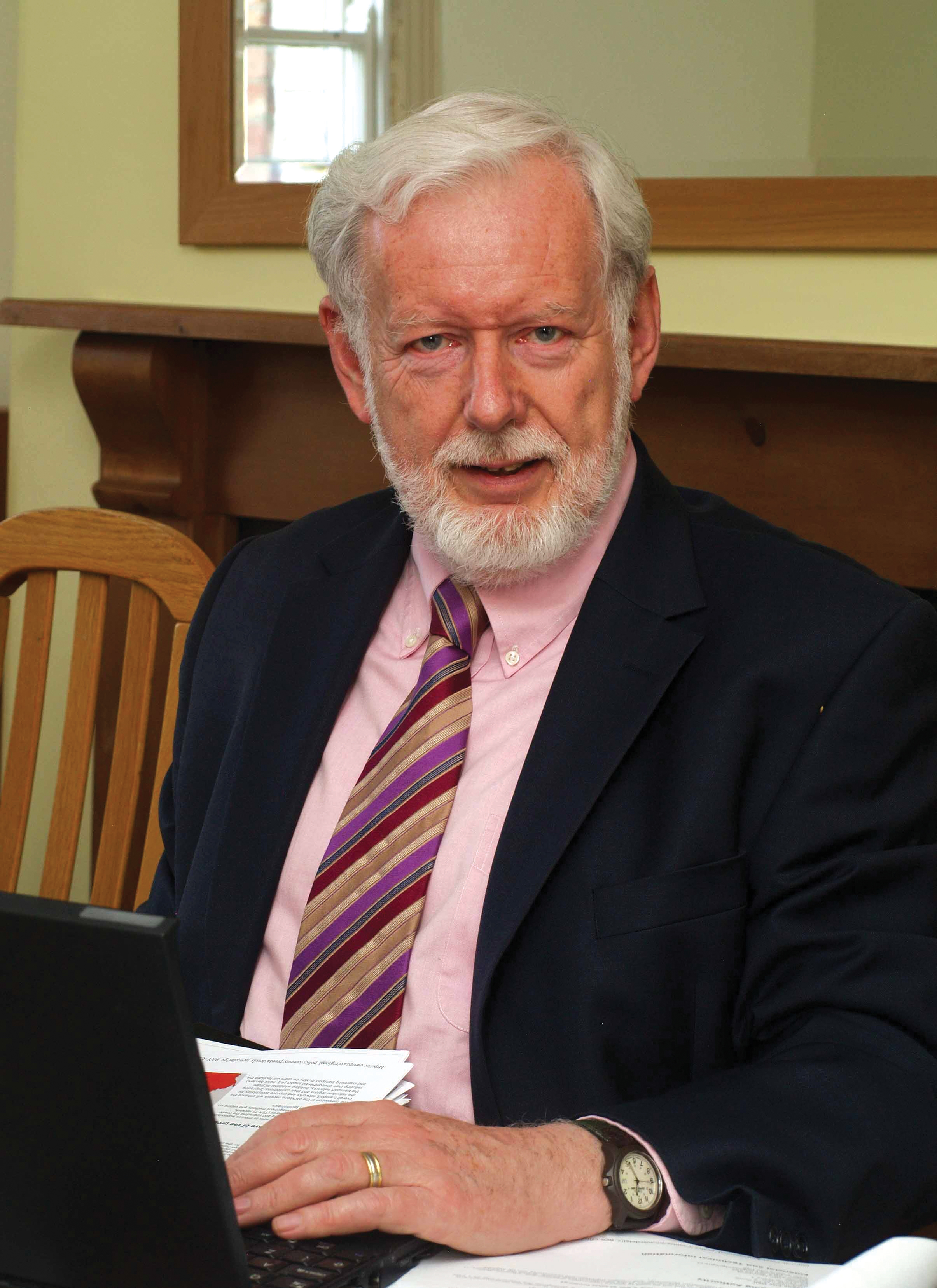ITS America has chosen Dr John Miles as technical editor for a new web-based resource on ITS. With funding from the US Department of Transportation (USDOT), the society plans to publish in mid-2014 in partnership with the World Road Association (PIARC) on the latter’s website.

Dr John Miles
ITS America
ITS America has chosen Dr John Miles as technical editor for a new web-based resource on ITS. With funding from the324 US Department of Transportation (USDOT), the society plans to publish in mid-2014 in partnership with the World Road Association (PIARC) on the latter’s website.
Acting on behalf of the ITS Joint Program Office (JPO) of USDOT’s321 Research and Innovative Technology Administration (RITA), ITS America is overseeing the development of the ITS content of PIARC’s Road Network Operations (RNO) ITS web resource. This aims to equip members of the international ITS workforce – current and future - with a teaching and reference tool designed to help their decision making on investments in ITS.
It will include up-to-date, web-based modules aimed at delivering a basic introduction to key ITS topics. Its strongly international perspective will give special attention to the needs of developing countries and those with economies in transition.
As technical editor, Miles will oversee a global pool of expert contributors. He acted as associate editor of the first edition of the PIARC ITS handbook, published in 2000, and as lead editor for the second 2004 edition. The 2014 edition, he says, “seeks to build on past efforts and draw on contemporary innovations in technology to make the resource accessible and relevant.”
A transportation policy analyst with more than 40 years’ experience, he was instrumental in establishing a trans-Atlantic network of ITS professionals from Europe, the US and Canada in the EC’s Atlantic project, with funding from the EC, Transport Canada and USDOT’s831 Federal Highway Administration. He is a member of Transport Associates Network.
288 ITS UK is moving into the ITS teaching and training sphere by setting up a register of members willing to give guest lectures and short courses to BSc and MSc students on topics within their expertise. Leading the initiative is technical director, Dr Alan Stevens, who told ITS International the idea came about following a number of sessions (including an International Benefits Evaluation and Costs (IBEC) workshop) at the 2012 6456 ITS World Congress in Vienna that were dedicated to ITS education and professional development.
“A consistent question was: where is the next generation of ITS professionals coming from?
ITS UK had previously, through a training task force, identified a need for professionals with a mix of both academic and business skills to take the industry forward; and has run one-off events for young practitioners,” he explained.
“We do not see ourselves as a training organisation, but we can support members who offer their time. I’m not aware of any other association setting up a guest lecturer register such as this.” The topic requests, he continues, have the potential to give useful insights into current ITS tuition and identify areas for focusing on. The society is also maintaining a register of suggested Masters degree subjects.
TTS Italia
Working with the4766 Italian Ministry of Infrastructure and Transport and the Rome Agency for Mobility, 4155 TTS Italia has just completed a pioneering two-month demonstration project on ‘Students today, citizens tomorrow: lessons for mobility and safety on the road’.
Involving over 500 middle-school students in seven schools in Rome, this focused on training for a future generation of responsible citizens who will be fully aware of the issues of urban, sustainable and intelligent mobility, as well as of the rules for safe and correct behaviour on the road.
The aim was to encourage young people to reflect on the concepts of safety, sustainability, intelligence and economy in urban transport as representing the basic awareness needed for all their subsequent travel choices: personal, supportive and institutional. The class ‘teachers’ were officials from the Ministry and the Agency, with modules on ITS developed in collaboration with TTS Italia.
The Ministry took care of staff preparation for operational activities in schools, with advice from experts in psychology and sociology. Following close monitoring and subsequent evaluation, there are hopes of running the project in more Italian cities in the next school year.
Network of National ITS Associations
The5510 Network of National ITS Associations has welcomed the recognition given to national associations in the recent report on traffic and travel management from the EC Urban ITS Experts Group. This recommends more European local highway and transport authorities to prioritise engagement with their associations, so as to improve their links with industry and academia.
Authorities, warns the Group, are often not in close enough contact with the academic institutions, “and, particularly, vehicle manufacturers,” at the forefront of ongoing ITS research. Referencing evolving technologies such as vehicle-to-vehicle (V2V) and vehicle-to-infrastructure vehicle (V2I) communications, its report says that active participation and partnership with vehicle manufacturers and academic institutions through ITS regional and national organisations offers a means of achieving influence.
Good contacts are also necessary to ensure that traffic management applications flowing from these technologies “are fully realised” and it is “highly desirable” for better links to enable authorities to influence the development process. Again, more of them joining their ITS associations will help to encourage greater partnership working, with clusters of potential client authorities clubbing together in joint ITS procurement drives to save time and costs.
“All 27 members support these statements,” Network chair Jennie Martin told ITS International. “Each ITS association considers it very important to act as a conduit between the different actors at the national and international levels of ITS research and deployment”.
The EC set up the Group to help local authorities responsible for highways, public transport and parking, as well as public transport operators, overcome organisational and institutional barriers to ITS deployment.
Key tasks set for the Group, which included representatives from 14 EU Member States, involved encouraging sharing of best practice and experience – which it has done by publishing a set of 68 indicative case studies; and producing guidelines for urban ITS deployment in traffic management, multi-modal travel information and smart payment.
ITS Russia
With the aim of reducing high road accident rates,75 ITS Russia is preparing the concept for a pedestrian strategy for Moscow and researching examples of best practice, programmes, action plans and ITS implementation projects from around the world.
It is focusing on two areas:
Highlighting the need for a strategy are the results from a one-day clampdown by the city’s traffic police.
This found that pedestrians break road safety rules (typically ignoring traffic lights and not using zebra crossings) twice as much as motorists – 3,000 violations against 1,500 – while 1,500 people a year are run over as the result of their own negligence.
ITS&S
Czech and Slovak ITS association0 ITS&S has paved the way for members to become partners in the Czech Republic’s new Transport Systems Development Competence Centre (RODOS). “The idea of bringing together the best that Czech academia and industry have to offer has been around for some time,” ITS&S executive director Roman Srp told ITS International, “but it has now gained official approval from the Czech Technology Agency, under its competence centres programme”.
As a result, the centre has won €6.8 million of funding over six years.
ITS Australia
Activation of cooperative ITS (C-ITS) pilots is of high importance, following the announcement that the 2016 ITS World Congress will be held in Melbourne,858 ITS Australia has told the country’s National Transport Commission (NTC). While congratulating the NTC on its recent Cooperative ITS Regulatory Issues Discussion Paper, CEO Susan Harris questions its assumptions on development being led from overseas.
Australia, she says, “offers a stable test-bed environment, based on a track record for early technology adoption and a culture of innovation, the development of international standards, and - importantly - a potential to export niche products and services that will expand the local ITS industry.”
ITS America has chosen Dr John Miles as technical editor for a new web-based resource on ITS. With funding from the
Acting on behalf of the ITS Joint Program Office (JPO) of USDOT’s
It will include up-to-date, web-based modules aimed at delivering a basic introduction to key ITS topics. Its strongly international perspective will give special attention to the needs of developing countries and those with economies in transition.
As technical editor, Miles will oversee a global pool of expert contributors. He acted as associate editor of the first edition of the PIARC ITS handbook, published in 2000, and as lead editor for the second 2004 edition. The 2014 edition, he says, “seeks to build on past efforts and draw on contemporary innovations in technology to make the resource accessible and relevant.”
A transportation policy analyst with more than 40 years’ experience, he was instrumental in establishing a trans-Atlantic network of ITS professionals from Europe, the US and Canada in the EC’s Atlantic project, with funding from the EC, Transport Canada and USDOT’s
-
%$Linker:
2 External <?xml version="1.0" encoding="utf-16"?><dictionary /> 0 0 0 oLinkInternal ITS UK its uk false #ITS-UK true false %> - %$Linker:
2 External <?xml version="1.0" encoding="utf-16"?><dictionary /> 0 0 0 oLinkInternal TTS Italia TSS Italia false #TTS-Italia true false %> - %$Linker:
2 External <?xml version="1.0" encoding="utf-16"?><dictionary /> 0 0 0 oLinkInternal Network of National ITS Associations Network of National ITS Associations false #Network-of-National-ITS-Associations- true false %> - %$Linker:
2 External <?xml version="1.0" encoding="utf-16"?><dictionary /> 0 0 0 oLinkInternal ITS Russia ITS Russia false #ITS-Russia true false %> - %$Linker:
2 External <?xml version="1.0" encoding="utf-16"?><dictionary /> 0 0 0 oLinkInternal ITS&S ITS&S false #ITSS true false %> - %$Linker:
2 External <?xml version="1.0" encoding="utf-16"?><dictionary /> 0 0 0 oLinkInternal ITS Australia ITS Australia false #ITS-Australia true false %>
Student aid
“A consistent question was: where is the next generation of ITS professionals coming from?
ITS UK had previously, through a training task force, identified a need for professionals with a mix of both academic and business skills to take the industry forward; and has run one-off events for young practitioners,” he explained.
“We do not see ourselves as a training organisation, but we can support members who offer their time. I’m not aware of any other association setting up a guest lecturer register such as this.” The topic requests, he continues, have the potential to give useful insights into current ITS tuition and identify areas for focusing on. The society is also maintaining a register of suggested Masters degree subjects.
TTS Italia
Catching them young
Working with the
Involving over 500 middle-school students in seven schools in Rome, this focused on training for a future generation of responsible citizens who will be fully aware of the issues of urban, sustainable and intelligent mobility, as well as of the rules for safe and correct behaviour on the road.
The aim was to encourage young people to reflect on the concepts of safety, sustainability, intelligence and economy in urban transport as representing the basic awareness needed for all their subsequent travel choices: personal, supportive and institutional. The class ‘teachers’ were officials from the Ministry and the Agency, with modules on ITS developed in collaboration with TTS Italia.
The Ministry took care of staff preparation for operational activities in schools, with advice from experts in psychology and sociology. Following close monitoring and subsequent evaluation, there are hopes of running the project in more Italian cities in the next school year.
Network of National ITS Associations
“Sign up” call to local authorities welcomed
The
Authorities, warns the Group, are often not in close enough contact with the academic institutions, “and, particularly, vehicle manufacturers,” at the forefront of ongoing ITS research. Referencing evolving technologies such as vehicle-to-vehicle (V2V) and vehicle-to-infrastructure vehicle (V2I) communications, its report says that active participation and partnership with vehicle manufacturers and academic institutions through ITS regional and national organisations offers a means of achieving influence.
Good contacts are also necessary to ensure that traffic management applications flowing from these technologies “are fully realised” and it is “highly desirable” for better links to enable authorities to influence the development process. Again, more of them joining their ITS associations will help to encourage greater partnership working, with clusters of potential client authorities clubbing together in joint ITS procurement drives to save time and costs.
“All 27 members support these statements,” Network chair Jennie Martin told ITS International. “Each ITS association considers it very important to act as a conduit between the different actors at the national and international levels of ITS research and deployment”.
The EC set up the Group to help local authorities responsible for highways, public transport and parking, as well as public transport operators, overcome organisational and institutional barriers to ITS deployment.
Key tasks set for the Group, which included representatives from 14 EU Member States, involved encouraging sharing of best practice and experience – which it has done by publishing a set of 68 indicative case studies; and producing guidelines for urban ITS deployment in traffic management, multi-modal travel information and smart payment.
ITS Russia
Help for pedestrians
With the aim of reducing high road accident rates,
It is focusing on two areas:
- Technical (eg ITS equipment for use at crosswalks); and
- Psychological (eg increased visibility, public information campaigns, encouraging the wearing of light-reflecting clothes and school education programmes).
Highlighting the need for a strategy are the results from a one-day clampdown by the city’s traffic police.
This found that pedestrians break road safety rules (typically ignoring traffic lights and not using zebra crossings) twice as much as motorists – 3,000 violations against 1,500 – while 1,500 people a year are run over as the result of their own negligence.
ITS&S
RODOS on road
Czech and Slovak ITS association
As a result, the centre has won €6.8 million of funding over six years.
ITS Australia
Importance of C-ITS pilots
Activation of cooperative ITS (C-ITS) pilots is of high importance, following the announcement that the 2016 ITS World Congress will be held in Melbourne,
Australia, she says, “offers a stable test-bed environment, based on a track record for early technology adoption and a culture of innovation, the development of international standards, and - importantly - a potential to export niche products and services that will expand the local ITS industry.”












